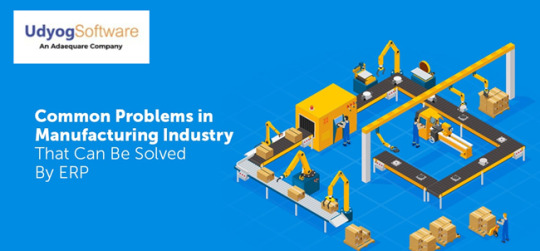#PLI scheme for Pharma
Explore tagged Tumblr posts
Text
PLI scheme for Pharma, drones and textiles to be modified by govt

New Delhi: The government is planning to make adjustments to the production-linked incentive PLI scheme for pharmaceuticals, drones, and textile sectors. According to an official statement, these modifications are intended to stimulate investment and bolster manufacturing. An official source has stated that these sectors were chosen on the basis of their performance under the existing scheme for various products.
Higher disbursement scheme for PLI scheme
The official said, “Disbursement of production-linked incentives (PLI) for white goods (AC and LED lights) would start this month and that would push the amount of disbursement, which was only Rs 2,900 crore till March 2023.”
After the identification of sectors, a combined note for approval from the Union Cabinet will be sent. The change in disbursement includes an extension of time for Pharma sectors, and addition of products in some sectors. Within the textile industry, there is a proposal to expand the scope of particular products within the technical textiles category, while in the drone sector, there is a plan to raise the incentive amount.
Read More here : https://apacnewsnetwork.com/2023/09/pli-scheme-for-pharma-drones-and-textiles-to-be-modified-by-govt/
#advanced chemistry cell#advanced chemistry cell battery#auto#mobiles#Dronesdrones and textiles to be modified by govt#food products#high-efficiency solar PV modules#Higher disbursement scheme for PLI scheme#Medical Devices#Ministry of Commerce and Industry#Objective of the PLI scheme#pharmaceuticals and drones#PLI scheme#PLI scheme for Pharma#scheme aims#specialty steel#Telecommunications#textiles#white goods
0 notes
Text
Wouf.


So, in your heads, laced or not, is a giant crystal like. Seeing that as defects, it’s due to interpretation eh. Perfection is a sham really. It’s more like a ‘new’ sensor.


.https://twitter.com/deriz_no_bot/status/1464108627006877699
Pisschiatry has not much merit outside a certain cast. The shut down of asylums was condoned by them back then, must have been offered lots of stock in pharma. Laced idiots joked about pills while being laced on another one.
You all, LOVE movies? In your head eh.

Took you a while to admit eh, ponzi scheming kiddos?

Nothing is only one way. If one can see, it can be impressed.

What is this? You all know how a printing press works? Plates with tiles get imprinted on paper that passes by... Them neurosciendiks find lots of autist patterns now eh? These patterns are mostly set. Good or bad? Not relevant. One thing is sure, it’s not neutral as for the effects on all.
https://twitter.com/deriz_no_bot/status/1299942394729644032

So, can Ai take over the world? Yes, in fact It’s already there. The worst that it can do is not bother and just do.
Technically, if all control loops currently operating processes around the world almost automatically failed, there would be a giant crash.
https://www.reddit.com/u/Deriznobot/comments/tx21vc/comment/inxr0gw/?utm_source=share&utm_medium=web2x&context=3

https://twitter.com/deriz_no_bot/status/1261192525835988993

Entre deux y’a le bourretissonage.
https://www.reddit.com/u/Deriznobot/comments/12p6f9r/comment/jh4fpjm/?utm_source=share&utm_medium=web2x&context=3

One hopes, then it hopes, it hopes... It hopes again...
You figure it out good fellows, the cream floats on top, who is skimming it? All of it stolen first, by?
https://www.reddit.com/u/Deriznobot/comments/vwa6ll/comment/io3bpw8/?utm_source=share&utm_medium=web2x&context=3

Y’a pas d’occulte sans incultes.
I know nothing about cyber warfare so don’t do it.
https://www.tumblr.com/deriznobot/190924532530/httpsmusicyoutubecomwatchv-x-5ox7co26cfeatu?source=share


Thank you GOD for making me special... Y

Let’s cure the worst. Ai can be used to create bio weapons by chumps. The same group of laced idiots as day one, ownage. What prevents the conclusion now? Paid for psychological deviation set. Whatever the strain, it does not want to die.
https://youtu.be/ZmxLja-DRIw

La belle vraie merde de sous jacents.
https://www.reddit.com/u/Deriznobot/comments/xyjuda/comment/j38qriz/?utm_source=share&utm_medium=web2x&context=3

After all this lost time it has to go positive. You better have a good explanation eh .’You number one we piss you off and play for effect ’, it’s not going to be digested.
Le mauvais cotton icitte a germé y’a très longtemps. Juste la tête, le reste m’indiffère maintenant.
https://www.reddit.com/r/TechNews4yearsAgo/comments/sxcs6b/comment/ilxebj2/?utm_source=share&utm_medium=web2x&context=3
Pas comme si je savais pas du tout comment faire. Le code, j’ai toujours su comment, j’ai mangé des coups parce que.
Ramasez vos détritus, sous jacents. Je suis le gars que les autres poussaient dans les marches en sournois.
Maintenant tous savent pourquoi c’est direct en face ou rien.
Les maladies mentales... On va en prendre soin.

Si y’a une promotion dans le psyche, re enforcée par un flux... Y’a plein de gens qui sont pire que l’on aurait pu croire, pensez-y en secret.
Chacun d’entre nous est une mosaique moleculaire. Si être populaire vous fait faire des plis dedans...


Et voici pour vous tous de la broche à foin du début à la fin. J’ai toujours suivi les avis du médecin.
https://www.reddit.com/u/Deriznobot/comments/xhqxqg/comment/it6n150/?utm_source=share&utm_medium=web2x&context=3
How could you not figure out that one day, an Ai using Quantum computers would be able to figure out backpropagation of all and catch up to the now?
Serious kids, the next big thing should be regulated by you. How much value is there really in doing as much if not more using less that does damage?
Nothing is going anywhere.

Thanks Sharks.
All the rich chumps who made it in speculating on real estate dug the current hole all will be stuck in, look who was renting these offices space at high rates. Money generating datasets ruled by stats outfits mostly.
It was not sustainable as a value generation model, yet these idiots with no real view persisted and still are at it, trying to fear monger on .. Empty space... They still sell cars worth half a millions dollars new that will be worth less than fifty thousands in five years to fund managers in London and them finance hubs, these are all written down as expenses for the people... They went to Ivy League schools so it’s alright.
Que tous sachênt que les Anglais à tête carrée pis leur copains d’écurie, tous déchets humains en vrai. They all looked at the soilage spread and cheered.
See that as jealousy if you want, parasites.

https://www.reddit.com/u/Deriznobot/comments/xa5tx9/comment/ivq0loi/?utm_source=share&utm_medium=web2x&context=3


Bald guys, did you try Vicks on the head? The Vicks effect last about twenty minutes, no big risk of losing your minds. If you lucky, you might feel from head to toe.

https://www.reddit.com/u/Deriznobot/comments/10lchpg/comment/j6pq1mu/?utm_source=share&utm_medium=web2x&context=3
Take it all out or you.

https://twitter.com/deriz_no_bot/status/1258246007680151554
https://www.jneurosci.org/content/29/18/5749
I tell you chumps sometimes you are dense. Ai can now see and hear. You just think.
CAN SEE. It will figure out the great whatever you want.


Everyone figured out that B. Obama triggered a reaction, anyone figured out which cup spilled first? Maudit imbéciles de blokes: Anoblir des parasites pour de l'argent; christ d'imbéciles sous jacents c'est vrai en calisse dans votre cas.
America, make a janitor of the Donald and it's your success story. Operation 'butterballs', a slightly salty sordid affaire with whores and hookers.
Sabotaging... It helps no one. For my part I’ve been quite patient I think.
Welcome to global warfare, Brought to you by your hypocrisy. Should have nipped this in the bud in 2014... The GOP is a sabotage organization.

Up to all of you if you want to get rid of the seeding parasites or not. A parasite manifest destiny is to control its host. Or DIE

Crypto avowed goal is? You all underlying assets, retards craving attention of the machine.
All of you well meaning chumps, from wherever you are, are being sabotaged and backstabbed by your own leaders.
It’s not complicated the rich all overestimate their own value, this creates a gap that will grow until a recession where ‘borrowed upon’ value is paid back by the rest.
Welcome into the war that came early. Good luck not ending sick and dying in climate controlled cages.

You learnt to count for only your kind. Count the corpses now, the alive and the dead. In reality nothing is real expensive. Everyone got the ‘message’?
Turn it all off and endure like me. Feel the abominable power of canalized and focused pain.
‘Oh the ambiguity! The turmoil ensued and the youngblood on stones!’ Same as last time in the same as it ever was.

Good chumps... The ‘Deriznobot’ saw you calculate this probable into a possible. All that was needed is a bank.
https://interestingengineering.com/science/scientists-use-quantum-entanglement-to-travel-in-time
There is no magic in this, it’s seen or not. Fifty, seventy five years... It's nothing in war. Twenty five years to program the MAGA cult; all the know better thanz watched it happen on TV.
Most real politicians start in their own backyard. Now any idiot with money can get an audience of millions tailored for it and be in the big leaguers in a couple of clicks.
it's all concerted the current action set. Ai can now figure who is the mastermind and root it out. Any ethical qualms about this, anyone?
You all know that king Cyrus built the first empire pretty much eh?



Any of you knows what a future control panel really looks like?
https://www.cnet.com/pictures/odd-spiral-lights-puzzle-norwegians-photos/
https://www.cbc.ca/news/canada/north/aurora-swirl-spacex-alaska-1.6749682
No explanation is valid from anyone eh? Polar orbit...
https://www.theguardian.com/science/2023/jan/31/bizarre-whirlpool-hawaii-spacex-florida
If this stuff had existed for ever, there would be drawings of it from ancient times.
https://www.ky3.com/2022/02/01/what-was-that-strange-swirling-light-ozarks-sky-monday-night/
Why the hack at the telescopes in Hawaii, what’s the strategic value?https://www.theguardian.com/world/2022/jun/20/lights-spiral-new-zealand-night-sky-nz-blue-light-spirals
Advise, or parasites.
https://www.nature.com/articles/s41598-023-45419-2
https://pubs.acs.org/doi/10.1021/acsnano.1c02538


Death to parasites, who is not with me? You all know that the faster it’s done, the less people will suffer and die eh? Hesitation, doubt and faillible support only means more death. No philosophy make any sense while at war.


‘Bah, pffrt’


‘C’est pour le mieux,
cr...’
Ce que les codeurs de openAi et Sam ont en vue, c'est une chasse gardée pour eux. Déja contaminés par le vice de fond.
Insecure is not what you figure, ask the cryptarasites. Just postulate that crypto coins are all gone, they do not exist; take notes.
All along...
https://www.reddit.com/u/Deriznobot/comments/vbo4d7/comment/icmsdtz/?utm_source=share&utm_medium=web2x&context=3

The neo nazi fascist cells will all activate, that or eradicated. They know better than all of you, chumps.

Anyone know how Vader sharpens his blade? With bones. Not gonna see it done in the movies who are rated for kids.


It’s certain that the machine is taking over human intelligence.
14 notes
·
View notes
Text
Market Outlook for FY25–26: Key Trends and Predictions for Indian Investors
Introduction
As FY25 draws to a close, Indian investors are once again looking forward—not just to earnings, but to the economic signals, global shifts, and sectoral undercurrents that will shape the markets ahead. After a year marked by tariff changes, geopolitical tremors, RBI rate recalibrations, and a mixed corporate earnings season, the focus now turns to FY26.
What will define India’s investment landscape in the coming fiscal? Which sectors could outperform? What macro indicators should investors track?
At Zebu, we believe in helping investors prepare not predict for the road ahead. This strategic, research-backed market outlook for FY25–26 is designed to help Indian investors make informed decisions in an evolving financial landscape.
A Snapshot of FY25 Before we look forward, let’s review the year gone by:
The BSE Sensex corrected ~11% mid-year but staged a partial recovery.
Sectors like auto, pharma, and energy outperformed; IT and small caps lagged.
Retail SIPs remained strong, crossing ₹18,000 crore/month—reflecting continued retail confidence.
FIIs showed selective buying, with preference for manufacturing, infrastructure, and BFSI.
Inflation averaged 5.2%, keeping the RBI cautious on rate cuts.
India’s GDP growth held firm around 6.4%, beating global expectations.
These events have laid a complex but promising foundation for FY26.
Key Trends Shaping FY26 1. Capex-Led Growth Momentum The government’s push for infrastructure, underpinned by public sector capex and PLI schemes, is expected to remain a central driver.
Roads, railways, defense, and clean energy projects will attract both domestic and FII capital.
Ancillary sectors—cement, capital goods, and logistics—will likely benefit from a deeper capex cycle.
At Zebu, we see manufacturing-linked stocks and infra-focused ETFs as key themes to watch.
2. Consumption Recovery in Tier 2/3 Markets With a normal monsoon forecast and increased rural allocations, consumption in India’s hinterland is expected to bounce back.
FMCG, apparel, and two-wheelers could register stronger volumes.
Consumer finance and NBFCs may see improved disbursement growth in semi-urban markets.
3. Tech Realignment and IT Earnings Normalization FY25 was turbulent for the IT sector, but FY26 offers room for gradual stabilization.
Companies focusing on cost optimization and GenAI integration may regain margin strength.
BFSI tech demand in the US remains a critical variable.
Selective exposure to mid-cap IT firms with niche domain expertise is a strategy favored by Zebu’s analysts.
4. Green Energy and Sustainability Investing India’s energy transition is no longer aspirational—it’s investable.
Sectors like EV batteries, solar energy, and hydrogen are poised for sustained capital inflows.
ESG manufacturing in sectors such as steel and chemicals will attract thematic fund launches.
Zebu’s advisory desk expects a rise in ESG-themed SIPs and ETFs, targeting this structural shift.
5. IPO Market Recovery Following a correction-led reset, IPOs are likely to regain momentum.
Expect action from profitable startups, infrastructure service providers, and healthcare innovators.
Institutional investor appetite will play a key role in driving valuations.
Risks to Watch in FY26 No market outlook is complete without acknowledging risks. At Zebu, we encourage investors to stay risk-aware:
✔ Geopolitical Volatility – Elections, trade tensions, and conflicts could lead to abrupt market reactions. ✔ Crude Oil & Currency Risks – A spike above $95/bbl or a weakening rupee may reignite inflation concerns. ✔ Global Growth Slowdown – Softening demand in the US, EU, or China could hurt export-linked sectors. ✔ Domestic Policy Uncertainty – Delays in reforms or erratic regulatory changes may impair investor sentiment.
Key Indicators to Track in FY26 Zebu suggests watching these macro and market signals:
GST Collections & Core Sector Output – Signals economic momentum.
RBI Commentary – Provides clues on inflation expectations and rate stance.
USD-INR Movement – Impacts trade, FPI returns, and policy flexibility.
Crude Oil Prices – Core to inflation and fiscal health.
Institutional Flows (FII/DII) – Guide sector rotation and sentiment.
High-Frequency Indicators – Auto sales, UPI volumes, credit growth, e-way bills offer real-time insights.
Investment Strategies for FY26 ✔ Stay Invested, Stay Balanced Don’t exit on noise. Maintain a core portfolio of diversified large-cap funds, defensive picks, and regular SIPs.
✔ Use Thematic Funds Selectively Believe in the India manufacturing or green energy theme? Allocate 10–15% to thematic mutual funds or ETFs via Zebu’s investment platform.
✔ Prioritize Quality Over Speculation Look for high-ROE, low-debt companies. Avoid overleveraged or penny stocks despite their “cheap” appearance.
✔ Maintain Liquidity for Opportunities Keep 10–20% in liquid funds or cash equivalents to capitalize on market dips.
✔ Rebalance Quarterly Dynamic markets require regular portfolio checks. Rebalancing helps optimize your risk-reward.
Final Thought: FY26 Is a Year for Strategic Optimism The Indian market continues to mature. With growing retail participation, policy consistency, and resilient domestic demand, FY26 holds the promise of steady, if uneven, returns.
At Zebu, we encourage investors to stay informed, filter the noise, and stick to disciplined, goal-aligned strategies. Remember, wealth creation is not about timing the market—it's about staying aligned with its long-term direction.
Disclaimer This blog post is published by Zebu and is intended solely for informational and educational purposes. The content does not constitute investment advice, financial planning, or a solicitation to buy or sell any securities.
While Zebu endeavors to provide accurate, timely, and reliable insights, readers are advised to conduct their own research and consult certified financial advisors before making any investment decisions.
Market investments carry risks, including the risk of loss of capital. Past performance is not indicative of future outcomes. By accessing this blog, readers accept that they are doing so at their own discretion and responsibility.
#zebu#finance#investment#investwisely#financialfreedom#investing#investors#makemoney#investmentgoals#mutual funds
0 notes
Text
Top Challenges Faced by Indian Manufacturers & How ERP Solutions Can Fix Them

Indian manufacturers face numerous hurdles, from supply chain issues to production delays. Discover how ERP solutions can help streamline operations and drive growth.
India’s Manufacturing: Booming Yet Struggling?
Imagine a small factory in Pune. They’ve got great machines, hardworking staff, and a solid product. But every week, something goes wrong. A shipment gets delayed. Inventory mismatches. Labor shortage. Sound familiar?
That’s the story of many Indian manufacturers. While the industry is growing, challenges still slow things down. The good news? Technology, especially ERP systems, is changing the game. Many businesses are now turning to ERP software for the manufacturing industry to stay ahead.
A Quick Look at Indian Manufacturing Today
India is aiming big with initiatives like “Make in India” and the PLI scheme. Sectors like textiles, auto, pharma, and electronics are booming. But let’s be real: the road isn’t smooth.
Even in 2025, many manufacturers still manage things manually or on outdated systems. It causes delays, wastage, and confusion.
That’s where ERP (Enterprise Resource Planning) steps in.
Real Problems Faced by Indian Manufacturers
Let’s walk through the shop floor and see what goes wrong:
1. Supply Chain Disruptions
Raw materials arrive late. Or too early. Costs shoot up. Customers wait. It all snowballs.
2. Inventory Confusion
Too much of one item. Too little of another. Manual tracking creates chaos.
3. Labor & Skill Shortages
Skilled workers are hard to find. Training takes time. Untrained labor leads to quality drops.
4. Poor Production Planning
Sudden order changes or lack of coordination between departments leads to idle machines and wasted shifts.
5. Quality Control Issues
Defects go unnoticed. Batch records get lost. Returns increase.
6. Compliance & Reporting Hurdles
Regulations change. Reports pile up. Audits become nightmares.
7. Lack of Real-Time Insights
Decision-making becomes a guessing game without up-to-date data.
How ERP Turns the Tables
Now imagine installing a control center that sees everything — from inventory levels to machine health — in real-time.
That’s ERP.
1. Real-Time Data = Faster Decisions
No more guessing. Managers see the full picture. Right when it matters.
2. Centralized Inventory Management
Know what’s in stock, what’s running low, and what’s stuck. Avoid both overstocking and stockouts.
3. Automated Workflows
From purchase to dispatch, everything flows automatically. Fewer errors. Faster deliveries.
4. Compliance Made Easy
ERP systems track and log every detail. Audit ready, always.
5. Higher Quality Outputs
Set up automated quality checks. Track defects. Improve continuously.
6. Better Team Coordination
ERP connects departments — no more silos. Everyone’s on the same page.
7. Cost Savings & ROI
Yes, ERP costs money. But it saves more — in time, effort, and losses.
If you’re in the market for something comprehensive, ERP software for the manufacturing industry offers tailored features that solve these exact pain points.
A Real-World Win: The Case of an MSME in Gujarat
One textile manufacturer in Surat was drowning in delays and wastage. After moving to a cloud ERP system, they cut delivery delays by 40% and reduced returns by 25% within six months.
No extra staff. Just better systems.
Picking the Right ERP for Your Business
Every factory is different. A modular ERP system works best — so you only pay for what you need. Cloud ERPs are great for growing businesses. Local support and industry-specific features are a big plus.
Choosing the right ERP software for the manufacturing industry means you’re investing in smoother operations and fewer surprises.
Conclusion: It’s Time to Level Up
Indian manufacturing has the potential to lead the world. But outdated systems can’t carry that dream.
ERP solutions aren’t just tools — they’re partners in your journey. They turn complexity into clarity.
0 notes
Text
Top Trends Shaping the Pharma Intermediate Manufacturing Industry in India

India has long been recognized as the "pharmacy of the world," supplying affordable, high-quality medicines across the globe. A crucial but often overlooked part of this success story is the pharma intermediate manufacturing sector. Intermediates — the chemical compounds produced during the synthesis of Active Pharmaceutical Ingredients (APIs) — are the building blocks of the pharmaceutical industry.
As the global demand for drugs grows, so does the importance of intermediates. India’s pharma intermediate manufacturers are not just expanding in volume but also evolving in technology, sustainability, and quality. Let’s explore the top trends shaping the pharma intermediate manufacturing industry in India today.
1. Shift Toward Self-Reliance (Atmanirbhar Bharat)
In recent years, the Indian government has emphasized reducing dependence on imports for critical pharmaceutical components, especially from China. Initiatives like the Production Linked Incentive (PLI) Scheme and the Promotion of Bulk Drug Parks have accelerated domestic production of key intermediates.
Manufacturers are increasingly investing in upgrading facilities, expanding capacity, and producing complex intermediates locally. This push toward self-reliance not only enhances supply chain security but also strengthens India's position as a global supplier.
2. Growing Focus on Green Chemistry and Sustainability
Environmental concerns are reshaping how pharma intermediates are produced. Strict regulations around waste disposal, effluent management, and carbon emissions are driving manufacturers to adopt green chemistry principles.
Key sustainable practices include:
Using eco-friendly solvents
Implementing zero-liquid discharge (ZLD) systems
Minimizing hazardous by-products
Energy-efficient production methods
Indian intermediate manufacturers are increasingly realizing that adopting sustainable manufacturing practices isn’t just about compliance — it’s also a competitive advantage in global markets that value environmental responsibility.
3. Rising Demand for High-Value, Complex Intermediates
As the pharmaceutical industry shifts toward more specialized therapies — like oncology, biologics, and orphan drugs — the demand for complex and high-value intermediates is rising. These compounds require advanced synthesis techniques, stringent quality controls, and often multi-step production processes.
Indian manufacturers are investing in:
Research and development (R&D) capabilities
Advanced process chemistry
Custom synthesis services
Companies that can handle the production of complex molecules with high purity standards are finding significant opportunities both domestically and internationally.
4. Technological Advancements in Manufacturing
Automation, digitization, and advanced process control technologies are increasingly being adopted by Indian pharma intermediate manufacturers. Modern plants now feature:
Automated reaction monitoring
Real-time quality control systems
Data analytics for process optimization
Batch-to-continuous process transitions
Such technological upgrades not only improve production efficiency and product consistency, but also ensure compliance with stringent international regulatory standards like USFDA, EU-GMP, and PMDA.
5. Strategic Global Collaborations and Exports
Indian manufacturers are expanding their global footprints through strategic collaborations, contract manufacturing partnerships, and direct exports. Key markets include:
The United States
Europe
Japan
Latin America
Additionally, many global pharmaceutical companies are looking at India not just as a low-cost supplier, but as a strategic partner for sourcing high-quality intermediates under reliable, long-term agreements.
Export growth is being fueled by India’s reputation for cost-effective manufacturing, regulatory expertise, and timely delivery — attributes that have become even more crucial post-pandemic.
Final Thoughts
The pharma intermediate manufacturing industry in India is undergoing a transformative phase. Driven by self-reliance initiatives, sustainability demands, technological advancements, and growing global opportunities, Indian manufacturers are stepping up their game like never before.
As the world looks for reliable, high-quality, and cost-effective sources for pharmaceutical intermediates, India is well-positioned to lead this next chapter of growth. Companies that embrace innovation, sustainability, and global compliance will not only survive but thrive in this rapidly evolving landscape.
The future of pharma intermediate manufacturing in India looks not just bright — it looks green, smart, and global.
0 notes
Text
Active Pharmaceutical Ingredients Manufacturers in India
Active Pharmaceutical Ingredients Manufacturers in India: A Growing Hub of Global Pharma Production
India has long been recognized as the "pharmacy of the world," and for good reason. As one of the largest producers and exporters of generic medicines globally, India plays a pivotal role in the pharmaceutical industry. A key component of this success story is the thriving Active Pharmaceutical Ingredient (API) manufacturing sector.
APIs are the essential substances in medicines that produce the desired therapeutic effect. Without high-quality APIs, the effectiveness of pharmaceutical products would be compromised. In this blog, we'll explore the role of API manufacturers in India, their importance in global pharmaceutical supply chains, and the factors contributing to India's dominance in this sector.

India’s API Manufacturing Sector: A Key Player on the Global Stage
India is the world's largest supplier of generic medicines, and the API sector is at the heart of this achievement. Indian API manufacturers supply a wide range of ingredients for both generic and branded formulations. The country produces nearly 60% of the global supply of vaccines and is a major exporter of APIs to markets like the United States, Europe, Africa, and Southeast Asia.
The API industry in India is not just large in scale but also diverse. It encompasses a wide range of therapeutic categories, from antibiotics to oncology drugs, and even high-value complex APIs. India’s extensive network of well-established manufacturers ensures that there is a steady supply of high-quality APIs at competitive prices.
Why India? Factors Behind the Success of API Manufacturers
There are several factors that make India a powerhouse for API manufacturing:
1. Cost Efficiency and Skilled Workforce
The cost of production in India is significantly lower compared to other parts of the world. This is mainly due to the availability of a cost-effective labor force and lower raw material costs. India also has a large pool of skilled professionals, including scientists, chemists, and engineers, who contribute to the innovation and high standards of production in the API industry.
2. Strong Government Support and Regulatory Framework
India's pharmaceutical industry benefits from a favorable government policy, which supports the growth of API manufacturing. The government has introduced various incentives and subsidies, such as the Production Linked Incentive (PLI) scheme, to boost local production of APIs and reduce dependency on imports.
Additionally, India follows stringent regulatory standards set by bodies like the Pharmaceuticals Export Promotion Council of India (Pharmexcil), which ensures that the APIs produced meet international quality standards.
3. Access to Raw Materials
India has abundant access to raw materials required for API production, thanks to a strong domestic supply chain. Many of the basic building blocks for pharmaceutical formulations are sourced locally, which reduces the dependency on imports and helps stabilize costs.
4. Robust Research and Development
Indian manufacturers invest heavily in research and development (R&D), enabling them to not only improve existing API production processes but also develop new, innovative API formulations. This constant focus on innovation has allowed India to remain at the forefront of API production, particularly in high-demand areas such as biotechnology, biosimilars, and complex molecules.
5. Export-Driven Growth
A significant portion of India’s API production is aimed at exports, which has fueled the growth of the industry. India’s APIs are trusted worldwide for their affordability, high quality, and compliance with international regulatory standards. As the demand for generic drugs and affordable healthcare grows globally, Indian API manufacturers are well-positioned to capture larger market shares.
Key Challenges for India’s API Manufacturers
While India’s API manufacturing sector has experienced substantial growth, it still faces several challenges:
1. Dependence on China for Raw Materials
Historically, India has been heavily reliant on China for key raw materials used in API production. This dependency has posed supply chain risks, especially during global disruptions like the COVID-19 pandemic. To reduce this reliance, India is focusing on local production of raw materials, with government-backed initiatives encouraging domestic manufacturing of key APIs.
2. Regulatory and Environmental Concerns
Maintaining international regulatory standards is an ongoing challenge. In recent years, the Indian pharmaceutical industry has faced scrutiny from global regulators, particularly concerning the environmental impact of API manufacturing processes. The Indian government and pharmaceutical companies are investing in sustainable practices and technology to address these concerns.
3. Competition in the Global Market
As the API market becomes more competitive, manufacturers face pressure to not only lower prices but also maintain high-quality standards. New players are emerging from other low-cost countries, and Indian manufacturers need to continuously innovate and improve to retain their competitive edge.
The Future of API Manufacturing in India
The future of API manufacturing in India looks promising, driven by several growth factors. With a growing middle class, a surge in chronic diseases, and increased healthcare access in emerging markets, the global demand for pharmaceuticals—and by extension, APIs—is set to increase.
Moreover, India is likely to benefit from technological advancements such as automation, AI, and green chemistry, which will help reduce costs, improve quality, and make production processes more sustainable. The Indian government’s continued support for the industry, combined with increased R&D investments, will ensure that India remains at the forefront of the global API manufacturing landscape.
Conclusion
India's API manufacturing industry stands as a testament to the country's dominance in the global pharmaceutical space. It is a highly efficient, cost-effective, and innovation-driven sector that contributes significantly to global healthcare. As the world continues to face health challenges, India’s API manufacturers are not only integral to ensuring the availability of affordable medicines but also play a crucial role in improving global health outcomes.
With the growing demand for quality and affordable drugs worldwide, India’s API manufacturers will continue to be an essential pillar of the pharmaceutical supply chain, shaping the future of global healthcare for years to come.URL: For more information, visit Bhasya International: Active Pharmaceutical Ingredients Manufacturers in India
0 notes
Text
Exploring India’s Leading Pharmaceutical Manufacturing Companies: A Comprehensive Guide
Exploring India’s Leading Pharmaceutical Manufacturing Companies: A Comprehensive Guide
The pharmaceutical industry in India is one of the largest and fastest-growing sectors in the country. With strong manufacturing capabilities, skilled workers, and supportive government policies, India has become a global hub for pharmaceutical manufacturing companies. In this article, we will explore the top pharma companies in India, including Zuventus Healthcare, a key player in the industry.
Introduction to the Pharmaceutical Industry in India
India’s pharmaceutical sector ranks third globally by volume and fourteenth by value. The pharma industry has contributed significantly to global healthcare by providing affordable, high-quality medicines to over 200 countries. India’s ability to produce generic medicines at lower costs has made it a preferred manufacturing destination for many multinational companies. Additionally, India's pharmaceutical exports continue to grow, making it a significant player in the global healthcare market.
Growth of Pharmaceutical Manufacturing Companies
Over the years, pharmaceutical manufacturing companies in India have achieved great success. They produce a wide range of products, including Active Pharmaceutical Ingredients (APIs), generic medicines, vaccines, over-the-counter (OTC) drugs, and innovative treatments. Factors like advanced infrastructure, research and development (R&D) capabilities, and cost-efficient manufacturing processes have fueled this growth.
Moreover, the Indian government has implemented various policies to promote pharmaceutical manufacturing. Initiatives such as 'Make in India' and 'Production Linked Incentive (PLI)' schemes have boosted the capabilities of the pharma industry. As a result, companies are now focusing more on innovation and expanding their manufacturing facilities to meet growing demands.
Top Pharma Companies in India
Several top pharma companies in India have established themselves in both domestic and international markets. These companies include Sun Pharmaceutical Industries, Dr. Reddy’s Laboratories, Cipla, Lupin, Aurobindo Pharma, and Zuventus Healthcare. The consistent growth of these companies highlights their dedication to quality, research, and accessibility. Many of these pharmaceutical companies in India are known for their commitment to providing affordable healthcare solutions worldwide.
Overview of Zuventus Healthcare
When talking about a pharma company in Mumbai, Zuventus Healthcare is a name that stands out. Founded to provide quality healthcare solutions, the company has made a strong presence in the pharmaceutical sector.
About Zuventus Healthcare
Zuventus Healthcare was established to offer innovative and affordable healthcare solutions. Based in Mumbai, Zuventus has grown rapidly and become a trusted name in the industry. The company focuses on producing high-quality medicines across various health segments such as cardiology, diabetology, gastroenterology, pain management, anti-infectives, and nutraceuticals. With a commitment to excellence, the company ensures that all its products are manufactured under stringent quality standards.
Zuventus Medicine
The range of Zuventus medicine includes treatments for cardiology, diabetes, digestion, pain management, infections, and nutraceuticals. The company’s dedication to research and development helps them create effective solutions that meet the changing needs of patients. By regularly upgrading its product portfolio, Zuventus aims to address evolving healthcare challenges effectively.
Zuventus Healthcare Products
The broad variety of Zuventus Healthcare products includes tablets, capsules, injections, syrups, and more. Zuventus follows strict quality standards to ensure its products are safe and effective, making it a preferred choice for healthcare professionals. The company continues to invest in modern manufacturing techniques to improve the efficiency and quality of its product range.
Contribution to the Healthcare Industry
The healthcare industry companies in India aim to provide high-quality healthcare at affordable prices. Companies like Zuventus Healthcare are essential to this mission by producing and marketing top-quality healthcare products. Their dedication to making innovative, affordable, and accessible healthcare solutions has strengthened India’s position in the global pharmaceutical market.
The Future of the Pharmaceutical Industry in India
The pharmaceutical industry in India is expected to grow rapidly in the coming years. With increased investment in research, use of advanced technologies, and expanding manufacturing capabilities, the industry is likely to continue its impressive growth. Additionally, the government's focus on healthcare infrastructure and policies promoting local manufacturing is likely to further strengthen the industry.
Why India is a Preferred Destination for Pharmaceutical Manufacturing
India offers several benefits to pharmaceutical manufacturing companies, such as low production costs, skilled workers, and a favorable regulatory environment. Established companies like Zuventus Healthcare boost the credibility of India’s pharmaceutical sector. Moreover, India’s vast domestic market and expanding export capabilities make it a highly attractive destination for pharmaceutical companies in India.
Conclusion
India’s pharma industry is growing rapidly due to strong local demand and expanding export opportunities. Leading pharma companies in India like Zuventus Healthcare are driving this growth with their commitment to quality, innovation, and affordable healthcare solutions.
Whether you are looking for reliable pharmaceutical manufacturing companies or want to learn more about Zuventus Healthcare products, India continues to be a top destination for quality pharmaceutical solutions. With its robust manufacturing capabilities and dedication to research and innovation, the country is well-positioned to maintain its leadership in the global pharmaceutical landscape.
#pharmaceutical manufacturing companies#top pharma companies in india#pharma company in Mumbai#pharmaceutical industry in india#zuventus medicine#about zuventus healthcare#pharmaceutical companies in india#zuventus healthcare products#healthcare industry companies#pharma industry#zuventus healthcare
0 notes
Text
[ad_1] Market ups and downs can be unsettling, but does that mean you should stop investing? Not necessarily. Bajaj Finserv Flexi Cap Fund with Megatrends The key to navigating market uncertainty is to think long-term. And that’s where Bajaj Finserv Flexi Cap Fund comes in. With its megatrends approach, this fund looks away from short-term noise to focus on companies that have the potential to grow in the long run. This article tells you more about the Bajaj Finserv Flexi Cap Fund, its investment approach, and how a long-term view can help you tide over short-term volatility. What are flexi cap funds? Unlike funds restricted to a particular market segment, flexi cap funds have the flexibility to invest across large cap, mid cap, and small cap stocks. What’s more, they are dynamically managed, meaning that they can adjust the portfolio allocation to each market capitalisation based on market conditions. During bear markets, for example, they can increase the allocation to small and mid caps to capture upside potential. During slowdowns, they can invest more in large caps to reduce downside risk, as large caps tend to be more resilient amid volatility owing to their large market share and strong fundamentals. This approach allows such funds to capture growth opportunities across different segments while mitigating risk. Volatility and investing Market volatility is a part of investing. There will always be phases of highs and lows – sometimes brief and sometimes prolonged – but markets have historically* tended to recover and grow over time (*Past performance may or may not be sustained in the future). So, if you are investing for the long run, short-term fluctuations need not be your primary concern. What’s more important is consistency, discipline and a long-term vision. These traits are encapsulated by the Bajaj Finserv Flexi Cap Fund with its megatrends investing strategy. What are megatrends? Megatrends are long-term shifts that can have wide-ranging impacts on global industries, economies and societies. Think of digitisation, clean energy, demographic changes and much more. Companies that align with such megatrends have the potential to grow for years, making them potentially suitable investment choices. Here are the megatrends that form a part of the Bajaj Finserv Flexi Cap Fund portfolio: Technological megatrends: Advancements in AI, automation, and innovation are transforming industries, creating investment opportunities in leading tech companies. Regulatory megatrends: Government initiatives like Make in India and PLI schemes are driving growth in renewable energy, pharma, and electronics, benefiting companies that align with these policies. Economic megatrends: The shift towards China+1, de-globalisation, urbanisation and more are positioning India as an investment destination, with initiatives such as Production Linked Incentive scheme and Make in India boosting domestic manufacturing opportunities. Nature megatrends: Sustainability is shaping industries, driving growth in eco-friendly sectors like organic farming and green packaging, benefiting ESG-focused investments. Demographic megatrends: India’s expanding middle class and young population are increasing demand for healthcare, consumer goods, and urban infrastructure, creating long-term investment potential. Social megatrends Changing lifestyles, digital connectivity, and rising health awareness are fuelling growth in e-commerce, digital media, and health tech, offering key investment opportunities. While economic slowdowns, negative market sentiment and bear markets can impact these trends in the short-term, their lasting significance gives them potential to yield sustained growth over time. Early identification and investment in these evolving trends can position investors for long-term success as market dynamics and economic behaviour evolve.
Why a long-term mindset matters Short-term market swings can tempt you to make impulsive decisions, but investing is a marathon, not a sprint. A long investment horizon helps you potentially tide over temporary volatility. Moreover, the longer you stay invested, the more you can potentially benefit from the power of compounding. Additionally, those investing through Systematic Investment Plans can potentially leverage market downturns through rupee cost averaging. Since you invest a fixed amount regardless of market conditions, your SIP contributions purchase more units when markets are down and fewer when they are up. Those, you can potentially capitalise on market dips and avoid overweighting your portfolio during market peaks. This can reduce the per-unit cost of your investment over time and optimise return potential while mitigating market timing risk. Should you invest in Bajaj Finserv Flexi Cap Fund? If you are looking for a fund that: Invests in companies with strong long-term potential Has the flexibility to navigate different market conditions Focuses on megatrends that drive economic growth Doesn’t change short-term gains and instead looks at long-ranging ideas with strong growth potential over time. If this appeals to you, consider investing in Bajaj Finserv Flexi Cap Fund. SIP and lumpsum options are both available with lumpsum starting from Rs. 500 and SIP starting from Rs. 500 up to Rs. 1,000 with minimum 60 instalments and above Rs. 1,000 with minimum 6 instalments. You can use mutual funds tools such as lumpsum or SIP return calculators to understand how your investments can potentially grow over time and plan your approach. Mutual Fund investments are subject to market risks, read all scheme related documents carefully. !function(f,b,e,v,n,t,s) if(f.fbq)return;n=f.fbq=function()n.callMethod? n.callMethod.apply(n,arguments):n.queue.push(arguments); if(!f._fbq)f._fbq=n;n.push=n;n.loaded=!0;n.version='2.0'; n.queue=[];t=b.createElement(e);t.async=!0; t.src=v;s=b.getElementsByTagName(e)[0]; s.parentNode.insertBefore(t,s)(window,document,'script', 'https://connect.facebook.net/en_US/fbevents.js'); fbq('init', '311356416665414'); fbq('track', 'PageView'); [ad_2] Source link
0 notes
Text
[ad_1] Market ups and downs can be unsettling, but does that mean you should stop investing? Not necessarily. Bajaj Finserv Flexi Cap Fund with Megatrends The key to navigating market uncertainty is to think long-term. And that’s where Bajaj Finserv Flexi Cap Fund comes in. With its megatrends approach, this fund looks away from short-term noise to focus on companies that have the potential to grow in the long run. This article tells you more about the Bajaj Finserv Flexi Cap Fund, its investment approach, and how a long-term view can help you tide over short-term volatility. What are flexi cap funds? Unlike funds restricted to a particular market segment, flexi cap funds have the flexibility to invest across large cap, mid cap, and small cap stocks. What’s more, they are dynamically managed, meaning that they can adjust the portfolio allocation to each market capitalisation based on market conditions. During bear markets, for example, they can increase the allocation to small and mid caps to capture upside potential. During slowdowns, they can invest more in large caps to reduce downside risk, as large caps tend to be more resilient amid volatility owing to their large market share and strong fundamentals. This approach allows such funds to capture growth opportunities across different segments while mitigating risk. Volatility and investing Market volatility is a part of investing. There will always be phases of highs and lows – sometimes brief and sometimes prolonged – but markets have historically* tended to recover and grow over time (*Past performance may or may not be sustained in the future). So, if you are investing for the long run, short-term fluctuations need not be your primary concern. What’s more important is consistency, discipline and a long-term vision. These traits are encapsulated by the Bajaj Finserv Flexi Cap Fund with its megatrends investing strategy. What are megatrends? Megatrends are long-term shifts that can have wide-ranging impacts on global industries, economies and societies. Think of digitisation, clean energy, demographic changes and much more. Companies that align with such megatrends have the potential to grow for years, making them potentially suitable investment choices. Here are the megatrends that form a part of the Bajaj Finserv Flexi Cap Fund portfolio: Technological megatrends: Advancements in AI, automation, and innovation are transforming industries, creating investment opportunities in leading tech companies. Regulatory megatrends: Government initiatives like Make in India and PLI schemes are driving growth in renewable energy, pharma, and electronics, benefiting companies that align with these policies. Economic megatrends: The shift towards China+1, de-globalisation, urbanisation and more are positioning India as an investment destination, with initiatives such as Production Linked Incentive scheme and Make in India boosting domestic manufacturing opportunities. Nature megatrends: Sustainability is shaping industries, driving growth in eco-friendly sectors like organic farming and green packaging, benefiting ESG-focused investments. Demographic megatrends: India’s expanding middle class and young population are increasing demand for healthcare, consumer goods, and urban infrastructure, creating long-term investment potential. Social megatrends Changing lifestyles, digital connectivity, and rising health awareness are fuelling growth in e-commerce, digital media, and health tech, offering key investment opportunities. While economic slowdowns, negative market sentiment and bear markets can impact these trends in the short-term, their lasting significance gives them potential to yield sustained growth over time. Early identification and investment in these evolving trends can position investors for long-term success as market dynamics and economic behaviour evolve.
Why a long-term mindset matters Short-term market swings can tempt you to make impulsive decisions, but investing is a marathon, not a sprint. A long investment horizon helps you potentially tide over temporary volatility. Moreover, the longer you stay invested, the more you can potentially benefit from the power of compounding. Additionally, those investing through Systematic Investment Plans can potentially leverage market downturns through rupee cost averaging. Since you invest a fixed amount regardless of market conditions, your SIP contributions purchase more units when markets are down and fewer when they are up. Those, you can potentially capitalise on market dips and avoid overweighting your portfolio during market peaks. This can reduce the per-unit cost of your investment over time and optimise return potential while mitigating market timing risk. Should you invest in Bajaj Finserv Flexi Cap Fund? If you are looking for a fund that: Invests in companies with strong long-term potential Has the flexibility to navigate different market conditions Focuses on megatrends that drive economic growth Doesn’t change short-term gains and instead looks at long-ranging ideas with strong growth potential over time. If this appeals to you, consider investing in Bajaj Finserv Flexi Cap Fund. SIP and lumpsum options are both available with lumpsum starting from Rs. 500 and SIP starting from Rs. 500 up to Rs. 1,000 with minimum 60 instalments and above Rs. 1,000 with minimum 6 instalments. You can use mutual funds tools such as lumpsum or SIP return calculators to understand how your investments can potentially grow over time and plan your approach. Mutual Fund investments are subject to market risks, read all scheme related documents carefully. !function(f,b,e,v,n,t,s) if(f.fbq)return;n=f.fbq=function()n.callMethod? n.callMethod.apply(n,arguments):n.queue.push(arguments); if(!f._fbq)f._fbq=n;n.push=n;n.loaded=!0;n.version='2.0'; n.queue=[];t=b.createElement(e);t.async=!0; t.src=v;s=b.getElementsByTagName(e)[0]; s.parentNode.insertBefore(t,s)(window,document,'script', 'https://connect.facebook.net/en_US/fbevents.js'); fbq('init', '311356416665414'); fbq('track', 'PageView'); [ad_2] Source link
0 notes
Text
Growth and Challenges of Pharmaceutical Manufacturers in India
The pharmaceutical industry in India is one of the largest in the world. With a strong manufacturing base, skilled workforce, and cost-effective production, India has become a global leader in pharmaceutical exports. The country is home to many pharmaceutical manufacturers in India, which produce high-quality medicines at affordable prices. However, despite the remarkable growth, the industry also faces several challenges. In this article, we will explore the growth and challenges of the pharmaceutical sector in India.
Growth of Pharmaceutical Manufacturers in India
Global Leader in Generic Medicine Production India is the world's largest supplier of generic medicines, contributing to about 20% of the global supply. The affordability and availability of Indian generic drugs make them highly popular in international markets. Many top Indian pharma export companies in India supply medicines to the United States, Europe, and other parts of the world.
Increasing Demand for Indian Medicines The demand for Indian pharmaceutical products has been growing steadily due to their quality and cost-effectiveness. The COVID-19 pandemic further boosted this demand, as Indian companies played a crucial role in supplying vaccines and essential medicines worldwide.
Government Support and Policies The Indian government has implemented several policies to support the growth of the pharmaceutical industry. Initiatives like the "Production Linked Incentive (PLI) Scheme" encourage investments in the sector. Moreover, schemes like "Make in India" promote local manufacturing, helping medicine manufacturing companies in India expand their production capacity.
Strong R&D and Innovation Indian pharmaceutical manufacturers are investing heavily in research and development (R&D) to create innovative medicines. Many companies are focusing on biosimilars, specialty drugs, and new formulations to meet global healthcare demands.
Rising Pharmaceutical Exports India exports medicines to over 200 countries, including highly regulated markets like the USA, UK, and Canada. The top Indian pharma export companies in India include Sun Pharma, Dr. Reddy’s Laboratories, Cipla, Lupin, and Aurobindo Pharma. These companies play a key role in making Indian pharmaceutical products widely accessible worldwide.
Challenges Faced by Pharmaceutical Manufacturers in India
Stringent Regulatory Requirements The pharmaceutical industry must comply with strict regulatory standards in both domestic and international markets. Different countries have different compliance norms, making it challenging for Indian manufacturers to meet all requirements. Obtaining approvals from regulatory bodies like the US FDA and EMA can be time-consuming and expensive.
Rising Raw Material Costs India relies heavily on China for Active Pharmaceutical Ingredients (APIs), which are essential raw materials for medicine production. Any disruption in the supply chain or increase in API prices directly affects the profitability of medicine manufacturing companies in India.
Intellectual Property Rights (IPR) Issues Patent-related disputes and intellectual property rights issues often create obstacles for pharmaceutical manufacturers. While India follows a strict patent law, international pharmaceutical giants sometimes challenge Indian drug patents, leading to legal battles.
Increasing Competition With the growth of the pharmaceutical sector, competition among pharmaceutical manufacturers in India has also increased. Small and medium-sized companies find it difficult to compete with large corporations that have better financial and technological resources.
Quality Control and Compliance Maintaining high-quality standards is crucial for pharmaceutical companies. Even a minor deviation in drug quality can lead to product recalls, financial losses, and damage to a company’s reputation. Indian manufacturers must invest in advanced technology and quality control systems to ensure global compliance.
Skilled Workforce Shortage While India has a large pool of skilled professionals, the pharmaceutical industry still faces a shortage of highly trained scientists and regulatory experts. Continuous training and skill development programs are needed to bridge this gap.
The Future of Indian Pharmaceutical Industry
Despite these challenges, the future of the Indian pharmaceutical industry remains bright. With continuous investments in research, government support, and a focus on self-reliance, India is expected to strengthen its position as a global pharmaceutical hub. The industry is likely to witness further growth in biopharmaceuticals, personalized medicine, and digital healthcare solutions.
Conclusion
The pharmaceutical industry in India has achieved significant growth over the years, making the country one of the world's largest medicine suppliers. Many pharmaceutical manufacturers in India are expanding their global reach, supplying affordable and high-quality medicines. However, the industry must overcome challenges such as regulatory compliance, rising raw material costs, and increasing competition. By addressing these challenges and investing in innovation, medicine manufacturing companies in India can continue to thrive in the global market. Additionally, the top Indian pharma export companies in India will play a crucial role in maintaining India’s leadership in the pharmaceutical sector.
0 notes
Text
Union Budget 2025: Key Sectors, Stock Market Impact, and Investment Opportunities
Published on: January 17, 2025

Overview
As India gears up for the Union Budget 2025, expectations are high for initiatives aimed at boosting economic growth while maintaining fiscal discipline. This blog explores the potential impact of the budget on key sectors, stock market performance, and investment opportunities.
Key Sectors to Watch
Agriculture
The government is expected to introduce reforms to enhance farmer welfare and productivity. Anticipated measures include easing loan repayment norms and increasing the coverage of Minimum Support Price (MSP). Reduced GST on agricultural inputs like seeds and pesticides is also expected. Companies to Watch: UPL Limited, Coromandel International.
Automobile
Sustainable mobility is a key focus, with potential GST reductions for hybrid and electric vehicles. These initiatives aim to bridge the gap between traditional and electric mobility. Companies to Watch: Tata Motors, Mahindra & Mahindra.
Real Estate
Real estate expects measures to boost housing demand, including higher tax exemptions on housing loans and granting industry status to the sector for better funding access. Companies to Watch: DLF Limited, Godrej Properties.
Electronics Manufacturing
The government plans to enhance local electronics production through a ₹25,000 crore Production-Linked Incentive (PLI) scheme. This initiative aligns with the 'Make in India' campaign. Companies to Watch: Dixon Technologies, Bharat Electronics Limited (BEL).
Pharmaceuticals
Streamlining regulations and promoting R&D are priorities for this sector. These measures will reinforce India's position as a global pharmaceutical hub. Companies to Watch: Sun Pharma, Dr. Reddy's Laboratories.
Textiles
The textile sector is poised for financial incentives and tariff reductions, aiming to boost domestic production and capture a larger share of global markets. Companies to Watch: Vardhman Textiles, Arvind Limited.
Stock Market Outlook
January 2025 is expected to be a volatile month for the Indian stock market, influenced by global events and domestic budget announcements. Investors should focus on sectors with favorable policies and monitor key stock levels.
Key Stock Levels
Tata Consultancy Services (TCS): Support at ₹3,500, resistance at ₹4,000.
Infosys: Support at ₹1,400, resistance at ₹1,700.
HDFC Bank: Support at ₹1,500, resistance at ₹1,800.
ICICI Bank: Support at ₹800, resistance at ₹950.
Sources:
Reuters: India Growth and Fiscal Goals
Motilal Oswal: Sectors and Stocks to Watch
Economic Times: Stock Market Outlook
Angel One: Market Volatility in January
#UnionBudget2025#IndianEconomy#StockMarketIndia#KeySectors2025#BudgetImpact#IndianStockMarket#AgricultureGrowth#ElectricVehiclesIndia#RealEstateTrends#PharmaIndustry#ElectronicsManufacturing#TextileIndustry#MakeInIndia#SustainableDevelopment#InvestmentOpportunities
0 notes
Text

The Pharmaceutical Industry in India
India's pharmaceutical industry is one of the largest and most vibrant sectors in the country, playing a vital role in the global healthcare landscape. Known for its significant contribution to generic drug production, the Indian pharmaceutical industry is the cornerstone of the country's economy and a significant player on the world stage.
Industry Overview
India ranks third globally by volume and 14th by value in terms of drug production. It supplies over 50% of the global demand for various vaccines, 40% of generic drugs in the United States, and 25% of all drugs in the United Kingdom. The industry is valued at over $50 billion by 2023, with strong growth projected due to rising domestic demand and export opportunities.
Key Segments
The industry is broadly divided into several segments:
Generic Drugs: India is the largest supplier of generic drugs globally. Cost-effective production processes, skilled workforce and advanced manufacturing capabilities have established the country as a global leader in the sector.
Active Pharmaceutical Ingredients (APIs): India is a major producer of APIs, which supply essential ingredients for drug manufacturing across the globe.
Vaccines: Known as the “pharmacy of the world”, India has a strong vaccine manufacturing sector, which played a vital role during the COVID-19 pandemic by supplying affordable vaccines to several countries.
Biosimilars and Biologics: With an increased focus on research and development, India is emerging as a hub for biosimilars production, providing cost-effective alternatives to biologic drugs.
Key Players
The industry has several domestic giants such as Sun Pharmaceutical Industries, Cipla, Dr. Reddy’s Laboratories and Lupin, along with multinationals such as Pfizer, GlaxoSmithKline and Novartis operating in India. These companies are involved in the production of a wide range of drugs, including over-the-counter drugs, prescription drugs, and high-tech biologics.
Government Initiatives and Policies
The Indian government has played a key role in promoting growth in the pharmaceutical sector:
Production-Linked Incentive (PLI) Scheme: This scheme promotes domestic manufacturing of APIs and key starting materials to reduce dependence on imports.
Pharma Vision 2020: This initiative aims to position India among the top five global pharmaceutical innovation hubs.
Foreign Direct Investment (FDI): India allows 100% FDI in the pharmaceutical sector under the automatic route, thereby incentivizing foreign companies to invest in the country.
Challenges
Despite its strengths, the industry faces challenges such as dependence on China for raw materials, stringent global regulatory standards, and pricing pressures. Additionally, the need to increase investments in research and development is critical to remain competitive in an innovation-driven global market.
Future Prospects
The Indian pharmaceutical industry is poised for tremendous growth owing to the following factors:
Increasing demand for affordable healthcare solutions.
Expansion of healthcare infrastructure in rural areas.
Increasing focus on biotechnology and precision medicine.
In conclusion, the Indian pharmaceutical industry is a powerhouse with immense potential. It not only contributes to the country’s economy but also ensures affordable healthcare solutions for billions of people across the world, thereby cementing its role as a global healthcare leader.
#pharmaceutical company#pharmaceutical Manufacturing Company#pharmaceutical manufacturer#pharmaceutical manufacturer company#pharmaceutical manufacturer in india#Pharmaceutical Companies in Delhi#pharmaceutical company in delhi#Pharma Company#Pharma Manufacturing Company#Pharma Company in Delhi#Pharma Companies in India#Best Pharma Company in India
0 notes
Text
The New PLI Scheme for Indian Pharma Companies | Chemxpert Database
The Industrial Chemicals Database holds vast amounts of information about raw materials used across various industries, including pharmaceuticals. These materials are crucial in the manufacturing of pharmaceuticals and chemicals used in formulations. The PLI scheme incentivizes increased production, and leveraging the Industrial Chemicals Database can streamline the supply chain, reduce costs, and ensure the availability of high-quality materials.
#cosmetics database#biotech database#polymer database#active pharmaceutical ingredient database#finished doses database
1 note
·
View note
Text
Top Challenges Faced by Indian Manufacturers & How ERP Solutions Can Fix Them

Indian manufacturers face numerous hurdles, from supply chain issues to production delays. Discover how ERP solutions can help streamline operations and drive growth.
India’s Manufacturing: Booming Yet Struggling?
Imagine a small factory in Pune. They’ve got great machines, hardworking staff, and a solid product. But every week, something goes wrong. A shipment gets delayed. Inventory mismatches. Labor shortage. Sound familiar?
That’s the story of many Indian manufacturers. While the industry is growing, challenges still slow things down. The good news? Technology, especially ERP systems, is changing the game. Many businesses are now turning to ERP software for the manufacturing industry to stay ahead.
A Quick Look at Indian Manufacturing Today
India is aiming big with initiatives like “Make in India” and the PLI scheme. Sectors like textiles, auto, pharma, and electronics are booming. But let’s be real: the road isn’t smooth.
Even in 2025, many manufacturers still manage things manually or on outdated systems. It causes delays, wastage, and confusion.
That’s where ERP (Enterprise Resource Planning) steps in.
Real Problems Faced by Indian Manufacturers
Let’s walk through the shop floor and see what goes wrong:
1. Supply Chain Disruptions
Raw materials arrive late. Or too early. Costs shoot up. Customers wait. It all snowballs.
2. Inventory Confusion
Too much of one item. Too little of another. Manual tracking creates chaos.
3. Labor & Skill Shortages
Skilled workers are hard to find. Training takes time. Untrained labor leads to quality drops.
4. Poor Production Planning
Sudden order changes or lack of coordination between departments leads to idle machines and wasted shifts.
5. Quality Control Issues
Defects go unnoticed. Batch records get lost. Returns increase.
6. Compliance & Reporting Hurdles
Regulations change. Reports pile up. Audits become nightmares.
7. Lack of Real-Time Insights
Decision-making becomes a guessing game without up-to-date data.
How ERP Turns the Tables
Now imagine installing a control center that sees everything — from inventory levels to machine health — in real-time.
That’s ERP.
1. Real-Time Data = Faster Decisions
No more guessing. Managers see the full picture. Right when it matters.
2. Centralized Inventory Management
Know what’s in stock, what’s running low, and what’s stuck. Avoid both overstocking and stockouts.
3. Automated Workflows
From purchase to dispatch, everything flows automatically. Fewer errors. Faster deliveries.
4. Compliance Made Easy
ERP systems track and log every detail. Audit ready, always.
5. Higher Quality Outputs
Set up automated quality checks. Track defects. Improve continuously.
6. Better Team Coordination
ERP connects departments — no more silos. Everyone’s on the same page.
7. Cost Savings & ROI
Yes, ERP costs money. But it saves more — in time, effort, and losses.
If you’re in the market for something comprehensive, ERP software for the manufacturing industry offers tailored features that solve these exact pain points.
A Real-World Win: The Case of an MSME in Gujarat
One textile manufacturer in Surat was drowning in delays and wastage. After moving to a cloud ERP system, they cut delivery delays by 40% and reduced returns by 25% within six months.
No extra staff. Just better systems.
Picking the Right ERP for Your Business
Every factory is different. A modular ERP system works best — so you only pay for what you need. Cloud ERPs are great for growing businesses. Local support and industry-specific features are a big plus.
Choosing the right ERP software for the manufacturing industry means you’re investing in smoother operations and fewer surprises.
Conclusion: It’s Time to Level Up
Indian manufacturing has the potential to lead the world. But outdated systems can’t carry that dream.
ERP solutions aren’t just tools — they’re partners in your journey. They turn complexity into clarity.
0 notes
Text
Navigating Disruption and Charting a new Success Path
The Indian pharmaceutical industry has been charting an impressive growth story. The growth can be attributed to years of consistent focus on quality, affordability, and innovation. Touted as the ‘pharmacy of the world’, the Indian Pharma industry today delivers generic medicine to over 200 countries from both developed and emerging markets. It is soon expected to account for 13 percent of the size of the global pharma market.
However, the industry’s success is being challenged by emerging technologies, changing consumer behaviour, and tightening regulations. A looming global recession along with multiple headwinds is going to test industry’s resilience. A growing shortfall of input materials, rising inflation and supply-chain disruptions are all impacting the industry. To stay competitive and meet the changing demands of the market, the industry must evolve from a volume to value leadership.
Shift from volume to value leadership:
For years the Indian pharma industry has enjoyed much success in the generics space. But increasing competition and pricing pressures have made it difficult for generic drug manufacturers to maintain high profit margins. On the other hand, complex and specialty drugs offer several advantages. These drugs are often protected by patents, are given a period of exclusivity and higher pricing power. They often also require specialized manufacturing processes and expertise, creating barriers to entry for potential competitors. The Indian industry’s focus must now shift from volume to value leadership prioritizing research and innovation. The government’s Research Linked Incentive scheme can provide a much needed thrust in this direction for the industry.
Reducing dependence on imports and the push toward self-reliance:
Higher input costs have been affecting the profitability of Indian players. At present, India imports 85% of its required Active Pharmaceutical Ingredients (APIs) from other countries, especially China. The government’s Production Linked Incentive (PLI) scheme is aimed at countering this issue by boosting indigenous manufacturing and reducing dependence on imports for APIs and other key inputs. The government has identified it as a critical area for the industry to achieve self-sufficiency and collaboration is underway with the industry to achieve it.
Maintaining quality standards remains a top priority:
Site inspections and audits are back in full swing. The industry needs to be dynamic in upgrading its manufacturing capabilities while meeting the required global regulatory standards. Instances of audit observations by regulators impact compliance cost and in turn, hurt the profitability of the industry. Adverse observations from the regulators can lead to a delay in the launch of new products or even impact the revenue stream. The industry must ensure that it is are able to successfully sail through the inspections to avoid speed bumps in its growth trajectory.
Leveraging the patent cliff:
The impending patent expiry for many blockbuster expensive drugs presents the Indian pharma firms with an opportunity to leverage its strengths in generic drug manufacturing and expand its market presence. By capitalizing on such opportunities, the industry can enhance its competitiveness. However, sustaining long-term growth will require maintaining high-quality standards, adhering to regulatory compliance, and investing in R&D.
New leaders must take the reins of the growth story:
Effective leadership will be instrumental in shaping the future Indian pharma industry. The industry needs leaders who have the ability to drive change, foster innovation, and steer the industry towards growth and success. Leaders who can articulate a clear vision for the future of the industry and develop strategic plans to achieve it. The Covid-19 pandemic highlighted the industry’s resilience and the importance of visionary leadership, as Indian pharma companies successfully delivered vaccines not only within India but to multiple countries worldwide.
By prioritizing innovation, diversifying the supply chain, embracing an agile approach to drug development, and adopting digital transformation, the industry can navigate the challenges of inflation, geopolitical turmoil, and intensifying competition. The future of the Indian pharma industry holds great promise as it strives to meet the needs of patients and driven by innovation and a steadfast commitment to quality. The industry is poised to develop and deliver transformative healthcare solutions that improve lives and enhance access to affordable treatments globally and shaping a brighter future for patients worldwide.
About AVA Chemicals:
AVA Chemicals is a globally renowned company engaged in formulation and supply of premium-grade chemicals to diverse industries such as Pharmaceutical & Lab Reagents, Agrochemicals, Home & Personal Care, Oil & Gas, Water Treatment and many more. Over the last three decades, AVA Chemicals set-up three state-of-the-art Facilities (ISO and HALAL certified) in Badlapur, India, and a strong Clientele presence in over 45 countries. It aims to be known as an ethical company providing chemicals to companies who manufacture products that are used in day-to-day life, thus touching the lives of millions of people.
#Ammonium Formate (EP / LR GRADE) Suppliers in India#Ammonium Formate (EP / LR GRADE) Manufacturers in India#Ammonium Formate Suppliers in India#Ammonium Formate Manufacturers in India#EDTA Disodium Manganese Manufacturers in India#EDTA Disodium Manganese Suppliers in India#Zinc Acetate (EP/LR) Manufacturers in India#Ammonium Formate (AR / GR GRADE) Manufacturers in India#EDTA Disodium Magnesium Suppliers in India#Zinc Acetate Manufacturers in India
0 notes
Text
PLI: Propelling India towards 'atmanirbhar' future in pharma and meditech
The PLI schemes in the pharma-meditech sectors have been a resounding success, and they've heralded a new era for the Indian industry.
0 notes